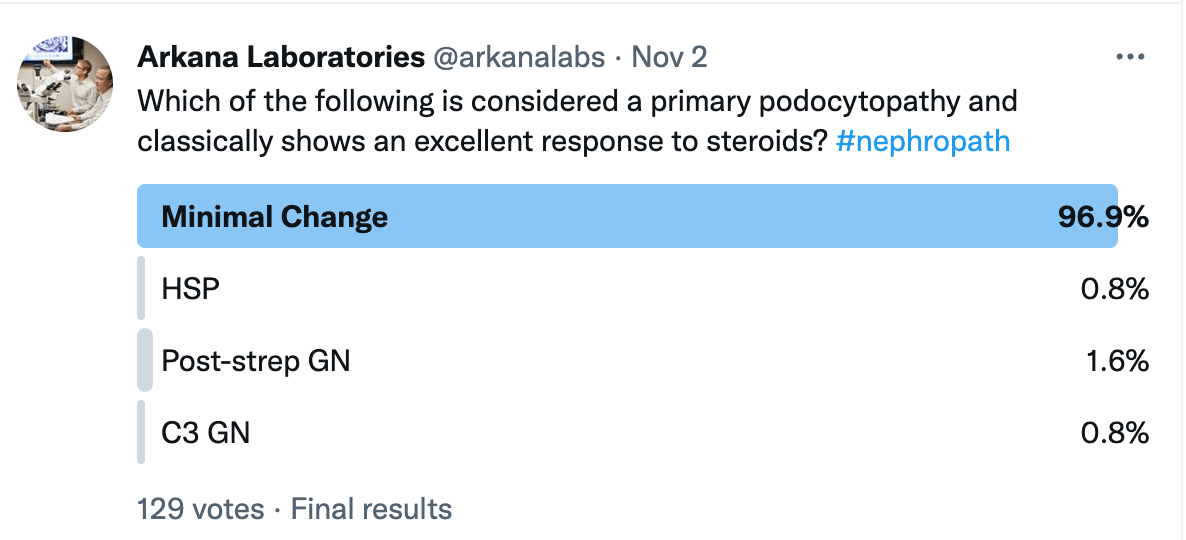Answer: A, Minimal change disease
Minimal change disease is classically seen in young children and usually is identified by a sudden onset of nephrotic syndrome characterized by proteinuria > 3.5 g/24 hr, hypoalbuminemia, and edema. Histologically, the biopsy demonstrates minimal to no significant glomerular changes while proximal tubules show increased protein resorption droplets. The major finding however is seen by electron microscopy which demonstrates widespread (complete) podocyte foot process effacement by electron microscopy with associated microvillus transformation. Typically, these patients show an excellent response to steroids and most patients recover fully. Of note, it is important to note sample adequacy in these cases as the differential diagnosis would also include an unsampled FSGS lesion in biopsies with a low number of sampled glomeruli.
Quick note: This post is to be used for informational purposes only and does not constitute medical or health advice. Each person should consult their own doctor with respect to matters referenced. Arkana Laboratories assumes no liability for actions taken in reliance upon the information contained herein.

